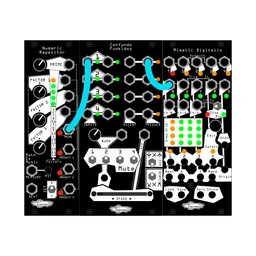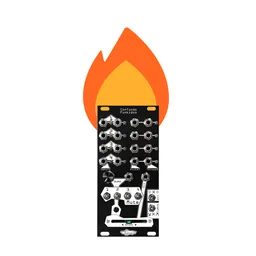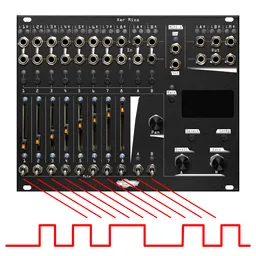First, you may have noticed that the blog now has a cool new name: Loquelic Literitas. Thanks to Instagram user ovumhum.jpg for the extremely cool suggestion (which came to him in a dream…). We hope to one day have an awesome logo to go with the epic name.
Now for the blog post part.
We recently got a question from a user: With the pitch knob turned all the way down on a BIA, sequences sent from a digital, note-aware sequencer don’t match the notes output from the BIA when it’s patched up to a DAW. Why is this, and how do we make it work so that G#2 is actually G#2?
In Eurorack, oscillators generally have no sense of musical pitch: you’ll usually have a knob and CV inputs that control it but making an actual note like C# or F is a separate process. Most oscillators follow the 1v/8va standard: each volt we add to the pitch input changes the note by an octave. This means we have an easy way to control pitch abstractly, but what about when we want to create a specific series of musical notes? Let’s quickly talk about some basic strategies for musically tuning an oscillator.
System-relative pitch
If you don’t care about pitch relative to the rest of the world, unpatch all the pitch CV inputs on the oscillators in your system and adjust one of your oscillators to the lowest pitch that you like. This will be the lowest note you can play in your patch, so make sure it sounds good and gives you enough range for what you want to do melodically.
From there, tune each oscillator to the same pitch using the first oscillator as a reference. You can tune by ear, or if that’s not your style, use an oscilloscope or tuner. Now, when you start patching up sequencers, all the oscillators will have the same base pitch and it will be easy to make melodic sequences.
Tuning to a standard like A=440hz
Most contemporary western music is tuned to A=440hz. Especially if integrating a Eurorack system with a DAW or digital sequencer that displays notes using letters and numbers (e.g. C1-C5), it can be useful to calibrate a patch to a tuning standard. Doing this is a simple process and only requires a tuner, either a hardware tuner like Soleo Vero or a tuner in a DAW:
-
Set your sequencer or midi-to-CV converter to C1 (or use a voltage reference to generate 1 volt) and patch it to the input of an oscillator.
-
Patch the oscillator’s output to your tuner and adjust the pitch knob until the output reads C1.
-
Repeat for every oscillator in your patch.
Alternatively, this can be done using any kind of frequency monitor with a Hz display (like an oscilloscope) and a reference sheet like this one.
Final note: don’t forget percussion
Tuning percussive elements like kicks, snares, and toms is just as important as other melodic elements! Disable any pitch modulation and envelopes, tune to the rest of your patch using one of the methods above, then repatch. Happy tuning!






